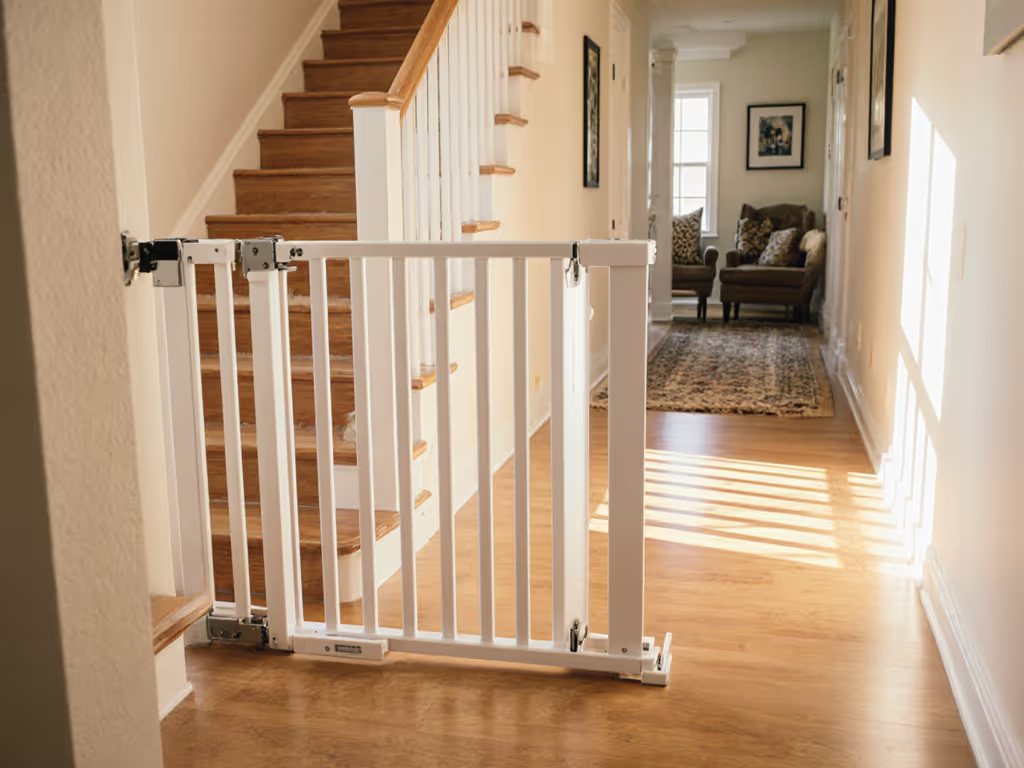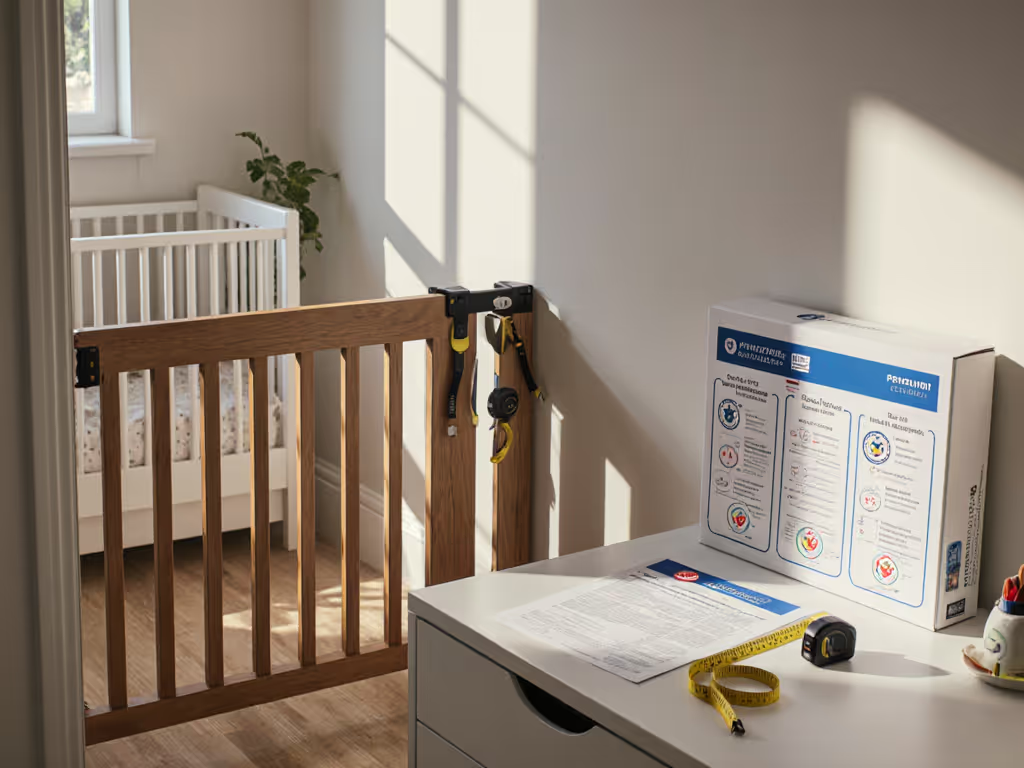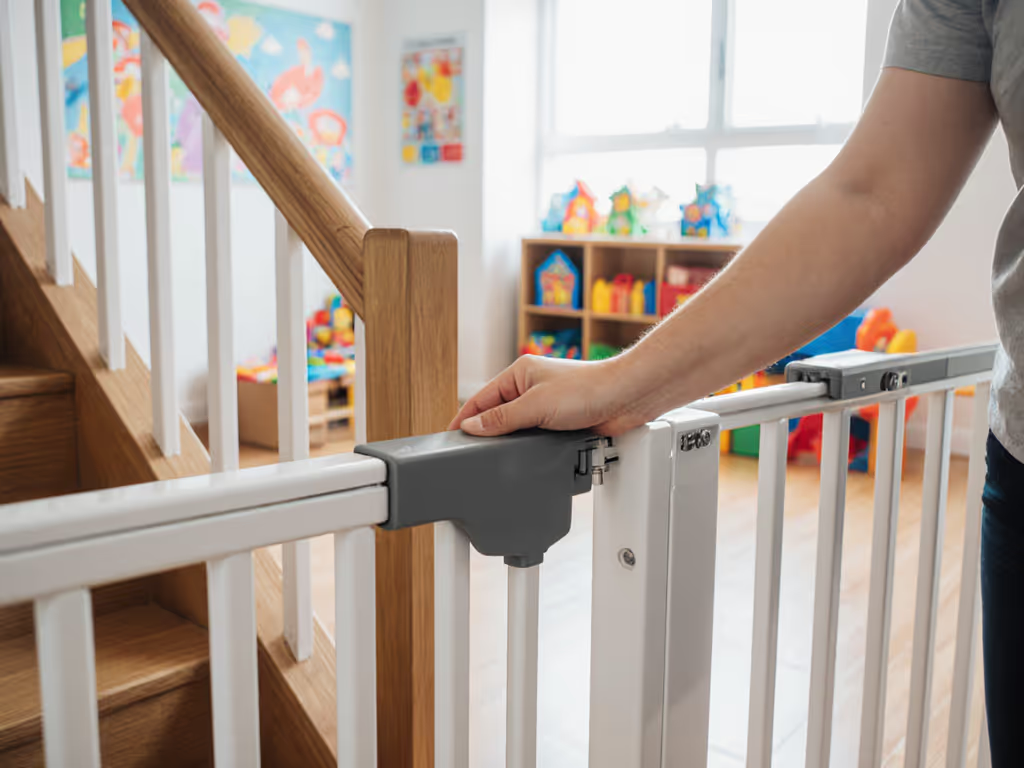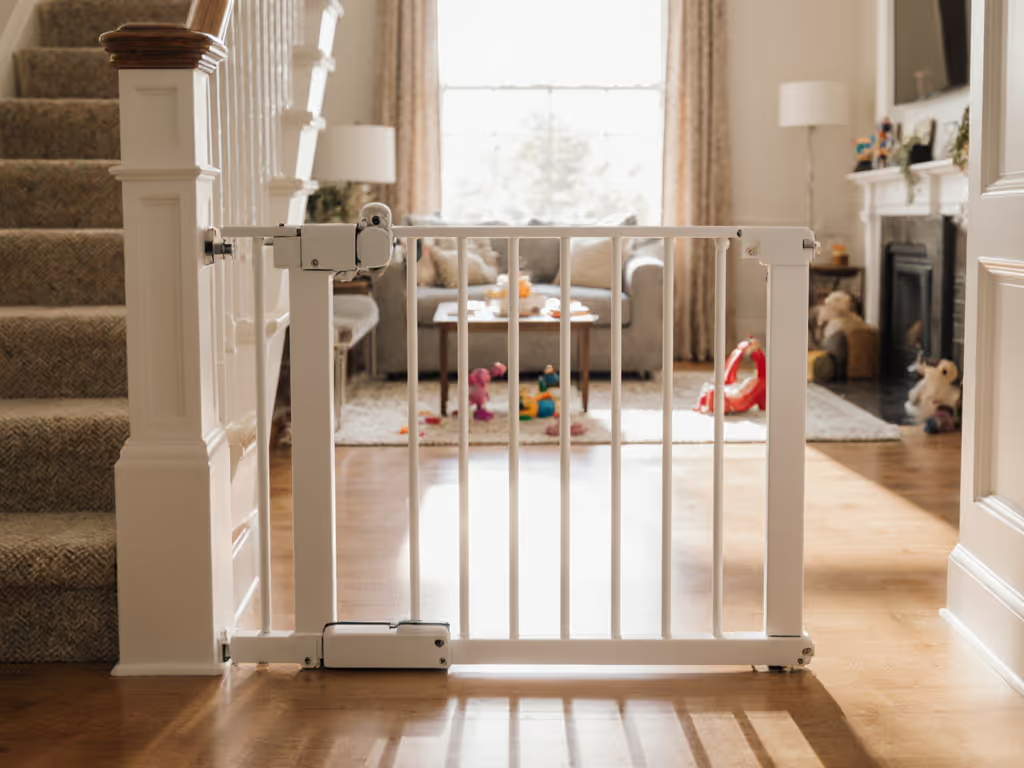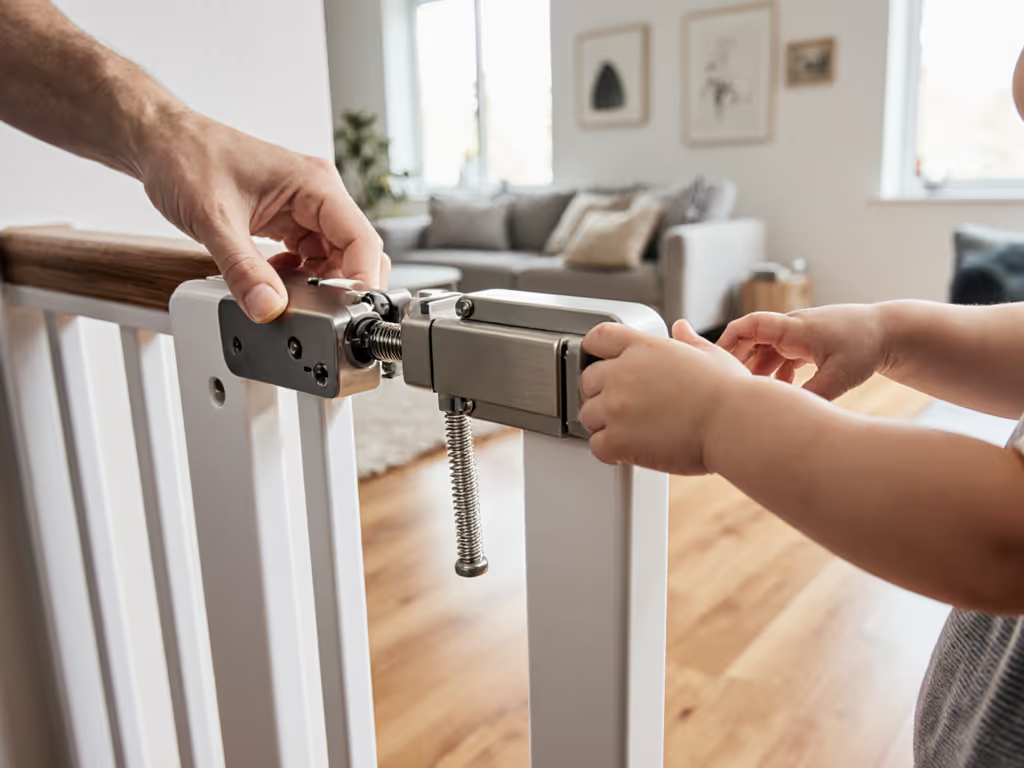
JPMA vs ASTM: Baby Gate Safety Certifications Decoded
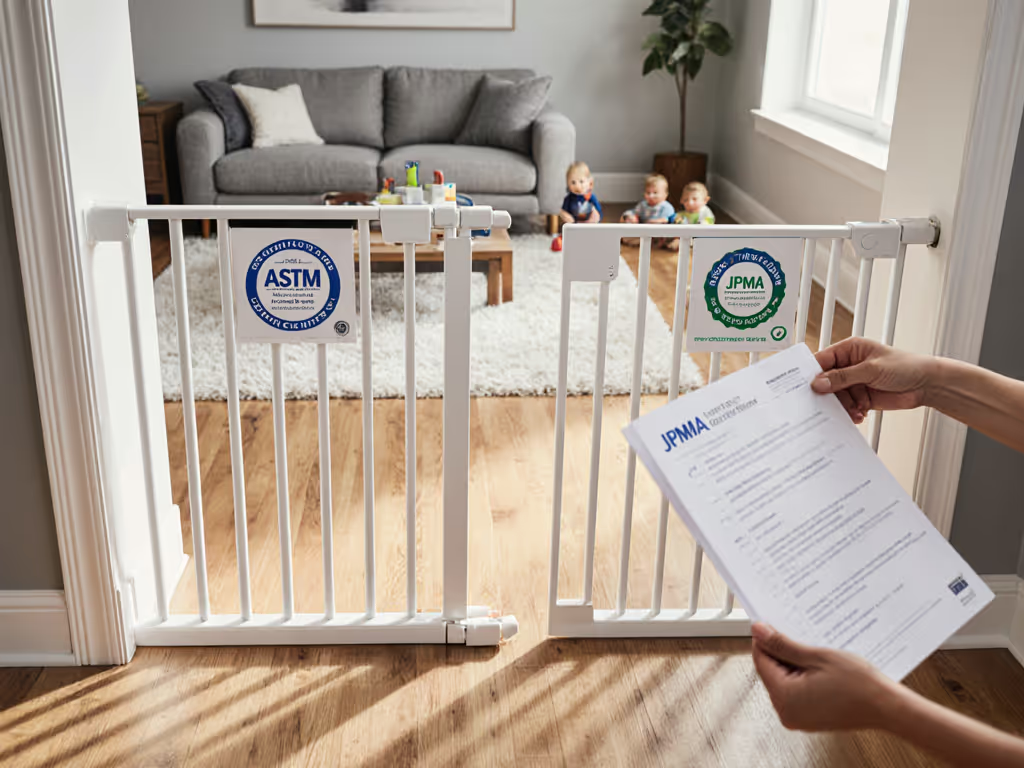
As a parent eyeing that stairway drop-off, baby gate safety isn't abstract; it's the difference between peace of mind and a panic attack. You're scanning for gate safety certifications like a hawk, but what do those labels actually mean for your home's tricky baseboards, uneven floors, and rental constraints? Let's cut through the noise. I've shimmed gates over 3-inch quarter-round molding and built custom spacers for curved banisters, so I know precise measurements in inches and millimeters turn confusing specs into bombproof installs. Today, you'll learn to decode certifications like a pro, translating standards into real-world safety where it counts most.
Why Certification Confusion Puts Your Child at Risk
Most parents assume "JPMA certified" or "ASTM compliant" guarantees safety. Reality? These labels serve different purposes, and mixing them up leads to dangerous assumptions. Here's what the fine print really means for your stairwell:
ASTM International: The Unseen Foundation
What it is: ASTM International (formerly American Society for Testing and Materials) develops voluntary safety standards like ASTM F1004-21 for gates. This isn't a certification; it's the blueprint. Independent labs use these specs to test for:
- Gate entrapment hazards: Gaps between slats must be ≤1.5" wide (38mm) to prevent head/neck entrapment. Openings deeper than 0.67" (17mm) require tighter spacing.
- Minimum 22" (559mm) height to stop toddlers from bridging gaps over stair nosings.
- Structural integrity under 50+ lbs of force (critical for pressure-mounted gates on drywall).
Why it matters to you: ASTM standards address physical realities, like how a 1.875" (1-7/8") baseboard lip creates a climbing foothold if your gate's bottom rail sits too high. A gate claiming "ASTM compliant" means it passed these tests, but no independent body verifies the claim. Manufacturers self-certify. Always cross-reference with third-party seals.
JPMA Certified Gates: The Manufacturer-Driven Checkmark
What it is: The Juvenile Products Manufacturers Association (now rebranded as the Baby Safety Alliance) offers a certification program. Brands pay to have products tested by CPSC-accredited labs against ASTM and federal standards (CPSIA).
The catch: This is a manufacturer-driven program. While verified products undergo annual testing and material-change checks, the oversight lacks ASTM's independence. Crucially, JPMA certified gates only confirm the tested model meets standards, not every colorway or configuration. An extension kit sold separately? Untested. A gate modified for your 38" doorway? Non-compliant.
Real-world impact: I once saw a pressure-mounted gate fail at the top of stairs because its "JPMA certified" model was tested on perfect drywall, but the homeowner's plaster walls had 1.25" (32mm) unevenness. The gate rocked loose within weeks. Certification is not installation-proof.
Flow dictates hardware. Your hallway's geometry, not a sticker, determines what keeps your child safe.
Translating Standards into Your Home's Reality
Certifications are useless if they don't align with your staircase. Focus on three field-verifiable checkpoints:
1. Measure the Critical Gaps (Not Just the Doorway)
- Bottom clearance: ASTM requires ≤3" (76mm) gap between floor and gate. But if you have baseboards, measure from the nosing, not the floor. A 0.5" (13mm) gap over a 2" (51mm) baseboard creates a 2.5" climbing ledge. Solution: Shims or custom spacers to drop the gate lower.
- Top-edge hazards: Gaps wider than 1.5" at the top? Toddlers wedge heads while climbing. Check for openings deeper than 0.67" (common in accordion-style gates). Replace immediately.
Pro tool: Use a 1.5"-diameter (38mm) PVC test rod (like plumbing supplies) to probe gaps. If it fits, it's unsafe.
2. Verify Hardware for Your Walls (Not Just the Manual)
Top-of-stairs truth: Pressure-mounted gates are never ASTM compliant here, even if "JPMA certified." ASTM F1004-21 Section 4.2 states: "Hardware-mounted gates shall be used at the top of stairs." For a deeper dive on choosing installation types, see our pressure vs hardware-mounted gates comparison. Yet, 32% of safety gate recalls involve pressure gates sold for stair use.
Your action plan:
- Renters: Use stud finders to locate joists. If mounting into drywall (e.g., banister posts), demand toggle bolts rated for 75+ lbs, not the included plastic anchors. I carry 1/4" x 2" zinc-coated toggles specifically for this.
- Homeowners: Drill pilot holes first. If your banister is softer pine than the hardwood in testing labs, undersized fasteners pull out. Match screw diameter to wood density (e.g., #8 screws for oak, #10 for pine).
- Check for recalls: 67% of recalled gates fail due to latch malfunctions or structural collapse. Search the CPSC database by model number before installing.
3. Test the Swing Path (Your Home's True "Flow")
A gate passing ASTM tests can still fail your layout. Stand where your child plays and observe:
- Does the gate swing into high-traffic paths? (Creates tripping hazards for adults holding kids.)
- Is the latch reachable while carrying groceries? (ASTM F1004-21 Section 8.3 requires one-handed operation, but doesn't test with a sleeping toddler in your arms.)
- Critical for renters: Can you remove it without patching holes larger than 1/4"? If not, insist on banister clamps with removable spacers.
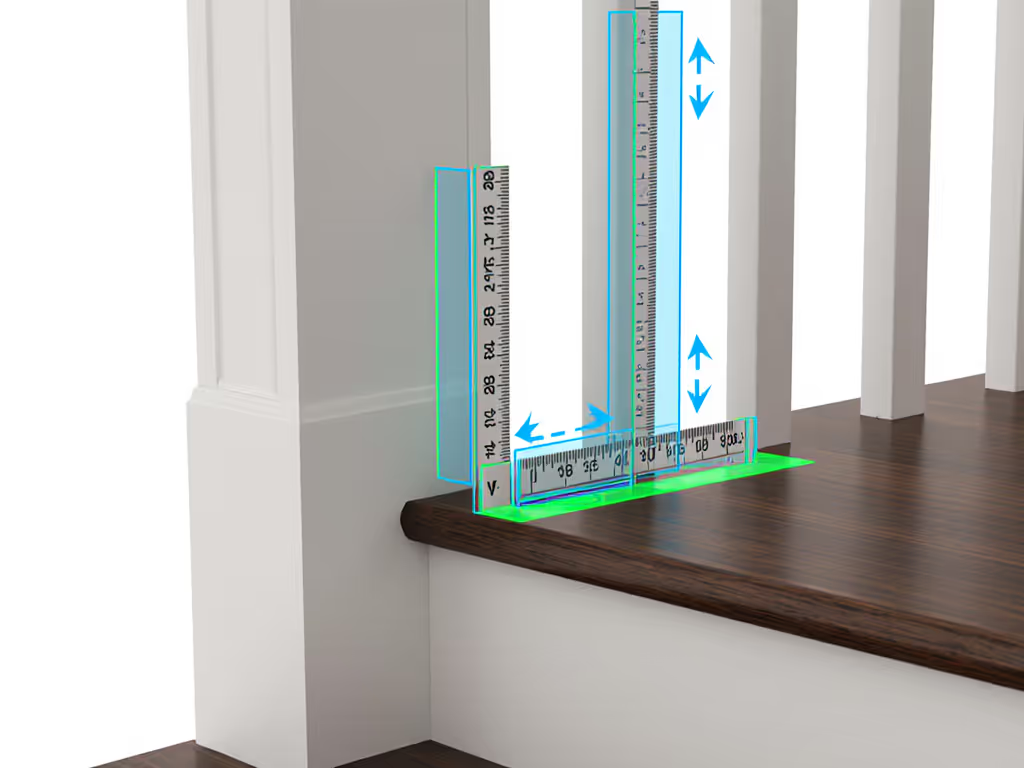
Your 3-Step Verification Ritual
-
Check the ASTM code: Packaging must list the exact standard (e.g., "ASTM F1004-21"). Generic "meets ASTM standards" is meaningless. If absent, walk away.
-
Confirm independent verification: Look for the Baby Safety Alliance seal (formerly JPMA), not just text saying "JPMA certified." Verify via their online directory. No seal? It's untested self-certification.
-
Simulate real-world stress:
- For pressure mounts: Push upward on the gate's bottom rail (not just sideways). If it lifts >0.25" (6mm), it will loosen on uneven floors.
- For hardware mounts: Shake the anchoring point at the height of your child's push. Drywall anchors should show zero flex.
Remember that client with the turned newel post? Her "JPMA certified" gate left a daylight wedge because the kit didn't account for her 3.5" (89mm) baseboard. We mapped the rise/run, built a custom spacer stack, and offset the hinge plate, turning a hazard into an intentional design. That's the power of measuring your flow first.
Final Action: Do This Before You Install
Certifications are starting points, not guarantees. Your next step: Grab your tape measure and:
- Document all gaps (bottom, top, side) against your baseboards and banisters in 1/8" increments.
- Search the CPSC recall database using your gate's model number.
- If mounting at stairs, physically verify the packaging states "hardware-mounted" (no exceptions).
A precise plan beats trial and error. Measure the flow, then commit to the mount. Your gate isn't just a barrier; it's the geometry of your family's safety. Get it right the first time.

